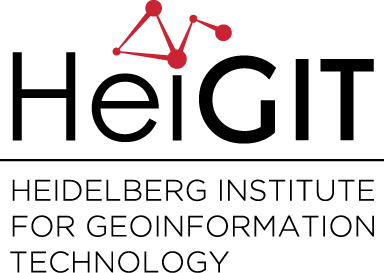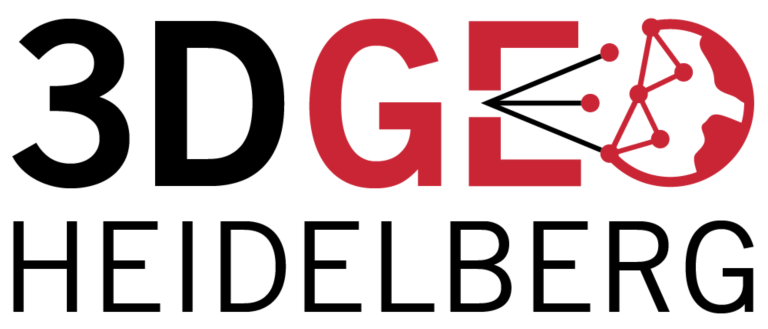Category: 3D
-
Mobile low-cost 3D camera maize crop height measurements under field conditions
Maps of the spatial distribution of crop heights can strongly support agriculture in terms of efficiency and yield optimization. Recently published results of experiments of the 3D Spatial Data Processing research group describe an approach to easily extend regular agricultural machines with low-cost sensors for capturing crop heights while the machine is in the field.…
-
3D geodata acquisition in the Siberian Arctic
In September 2017, the 3D Spatial Data Processing Group (3DGeo) joined the German-Russian expedition of the Alfred Wegener Institute (AWI) for Polar and Marine Research to the Arctic research station Samoylov (N 72°22’, E 126°29’) in the central Lena Delta. Under the lead of Julia Boike, the research team maintained and expanded long-term monitoring stations…
-
LiDAR meets Art
An interesting 3D art project using point clouds of the 3D Spatial Data Processing research group of Prof. Bernhard Höfle (3DGeo) was recently realized by artist Gerrit Frohne-Brinkmann. The data were acquired from natural karst cave features in the Dechen Cave near Iserlohn, Germany both with a low-cost Kinect sensor and terrestrial LiDAR. For the…
-
Call for papers – PFGK18 : Photogrammetrie – Fernerkundung – Geoinformatik – Kartographie – 2018
Feel free to submit papers to our DGPF Working Group on Geoinformatics (Prof. Haunert, Prof. Höfle). Important dates for submission can be found here: http://www.pf.bgu.tum.de/pfgk18/pfgk18_dat.html Deadline for regular papers is 31 October 2017!
-
GIScience group members at the ISPRS Geospatial Week 2017 in Wuhan, China
Last week (Sept. 18-22, 2017), our six colleagues, Prof. Alexander Zipf, Doctoral Candidate Xuke Hu, Dr. Hongchao Fan, Dr. Martin Hämmerle, Dr. Zhiyong Wang, and Dr. Wei Huang, participated in the ISPRS Geospatial Week 2017 held in Wuhan, China. In the opening ceremony on Sept. 18, 2017, the U.V. Helava Award was presented to Dr.…
-
Study “Multiscale analysis and reduction measures of urban carbon dioxide budget based on building energy consumption” published
The 3D spatial data processing group had the opportunity to collaborate with the team of Prof. Tzu-Ping Lin from National Cheng Kung University, Tainan, Taiwan, within the frame of a study dealing with carbon emission reduction measures in urban environments. One option of reducing carbon emission by buildings is to install photovoltaic (PV) panels in…
-
ArchEyeAutomatic summer school 2017
From 26 to 28 July, the 3D spatial data processing group contributed to the “ArchEyeAutomatic summer school 2017: Cameras, Drones, and Laser scanning. Modern ways to document ancient objects”. With a focus on documenting and analyzing archaeological sites and objects, the summer school introduced around 40 participants to various methods of close-range remote sensing at…
-
Innsbruck Summer School of Alpine Research 2017: Close Range Sensing Techniques in Alpine Terrain
From 16 to 22 July, the second ISPRS Summer School of Alpine Research took place in Obergurgl, Austria. Around 40 participants from four continents enjoyed a mix of lectures, field work and hands-on data processing related to various research topics in high mountain research. Hosted at the beautifully located and perfectly equipped Alpine Research Centre…
-
Determination of building inundation depths based on user-generated flood images – new study published
In our recently published study “Direct local building inundation depth determination in 3-D point clouds from user-generated flood images” we present a new approach for deriving local building inundation depth from ordinary user-generated flood images captured during a flood event. After reconstructing a 3-D scene of the building of interest with close-range photogrammetry (CRP) algorithms,…
-
Martin Hämmerle receives PhD
Yesterday, our colleague Dr. Martin Hämmerle defended his PhD thesis with great success. We would like to congratulate him – with our sincere thanks for his hard work and amazing research the last years. Martin is an expert on 3D geodata (with focus on 3D point clouds from LiDAR and photogrammetry), methods for 3D processing…
-
3D bathymetry measurements in shallow-water environments with a low-cost sensor – study published
To take bathymetric measurements in areas with shallow water is very challenging for methods such as SONAR or bathymetric LiDAR. In our study “Assessing the Potential of a Low-Cost 3-D Sensor in Shallow-Water Bathymetry”, we examine the performance of a low-cost 3D camera when capturing bathymetry in waters up to 0.4 m depth. The tested…
-
Follow-up 3D-TAIGER meeting at National Cheng Kung University in Tainan
Within the exchange and collaboration project 3D-TAIGER (Multi-Source 3D Geoinformation Extraction for Improved Management of Forest and Natural Hazards – Collaboration between TAIwan and GERmany), a further workshop took place in Tainan from Thursday, 06 April 2017 to Monday, 10 April 2017. Hosted by the National Cheng Kung University (NCKU) in Tainan, the schedule comprised…


